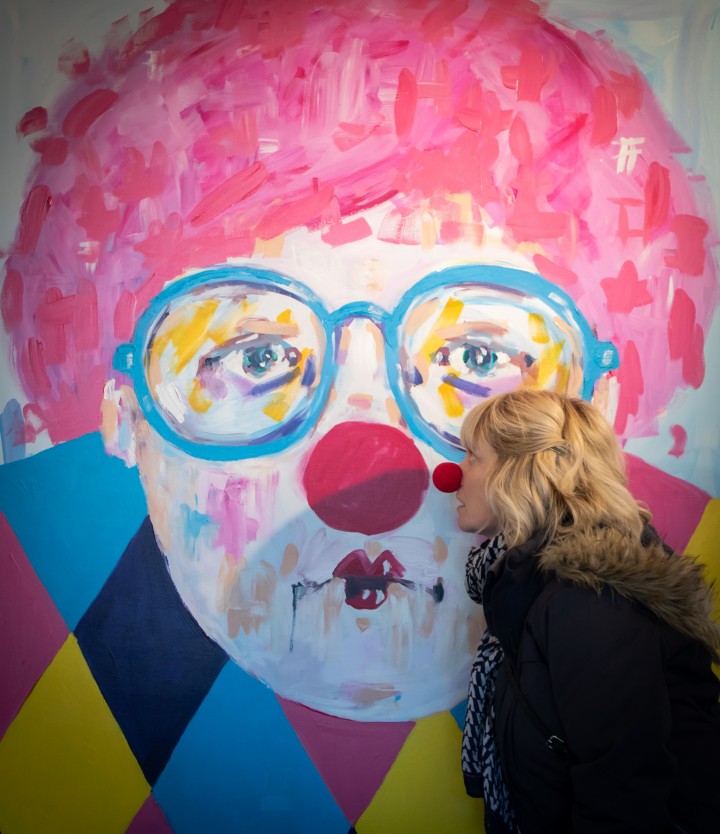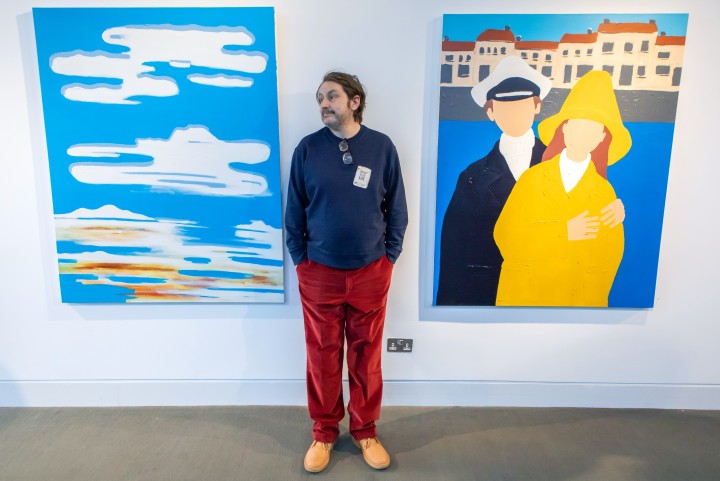Scottish Art News
Latest news
Magazine
News & Press
Publications
Scale Model Memories
By Greg Thomas, 23.03.2023

“When I turned my life around in early 2021 I knew that to be emotionally fulfilled I must explore my creative potential,” Willie Sutherland states in the notes to his new exhibition Origins, which runs at Greenock’s Beacon until 1 April. “[I]n the words of George Wyllie before me, it was ‘time for art’.” The example of Wyllie is useful in getting a handle on Sutherland’s work. There’s arguably a kind of school of weegie pop-art that draws in everything from Wyllie’s paper-boat sculptures and the cartoonish extravagance of John Byrne to the three-dimensional Oor Wullie sculptures dotted around Glasgow’s public spaces.
Like Wyllie, who worked as a customs officer before turning to art, Sutherland is an autodidact. Unlike Wyllie, he openly describes his art as a means of processing the trauma and deprivations of addiction. His 2021 sculpture ‘Self-Portrait as a Dollhouse’, first shown at Tramway, is a scale-model of the rehab facility at Murdouston Castle where the artist spent his 50th birthday. There’s a history of art-historical pontificating on the emotional satisfaction derived from scale models which might start with Levi- Strauss’s ‘The Savage Mind’. The French anthropologist discusses how objects assume “intelligible dimensions” when reduced in this way—become easier for the mind to inhabit. The 13 “self-portraits” that make up Origins pursue a similar idea with a good deal of intuitive creative intelligence. Sutherland talks about his paintings – which have the bold, straight-from-the-tube colour schemes, simple shapes, and clear outlines of pop – as means of “trying to work out who I am by taking half- formed memories and reimagining the scene looking in on myself.”
 Willie Sutherland with works. Credit: Elaine Livingstone.
Willie Sutherland with works. Credit: Elaine Livingstone.
Many of these works show archetypal scenes, figures, or situations from early childhood: titles like ‘Flora/Fauna’, ‘Little Fluffy Clouds’, and ‘Jam Tomorrow’ suggest the thematic range, humdrum and suburban. In most of the pieces depicting people, facial features have been removed, as in ‘A Benefactor?’, with its prim hand-bag-clutching relation, and ‘Prickly’, which shows a stressed Playmobil cowboy with classic two-pronged cactus (this piece also suggests the psychological influence of cinema, another important theme across the show). Rather than seeming sinister, this gesture of effacement reflects a kind of scale-modelling of memory, the reduction of scenes from the past to elementary motifs or snapshots that can be safely inhabited—and then, perhaps, left behind.
Each painting is accompanied by a written statement: “he didn’t understand people so he pushed them away,” “and then he discovered that he was lost in the character,” etcetera. Like the show as a whole, these lyrical snippets document a healing process but also provide a point of emotional access for the viewer. As the artist puts it, “I’m inviting you the viewer to metaphorically wear these paintings as a costume, to project yourself into the scene.”
Willie Sutherland’s exhibition Origins is exhibited at Beacon Arts until 1st April




